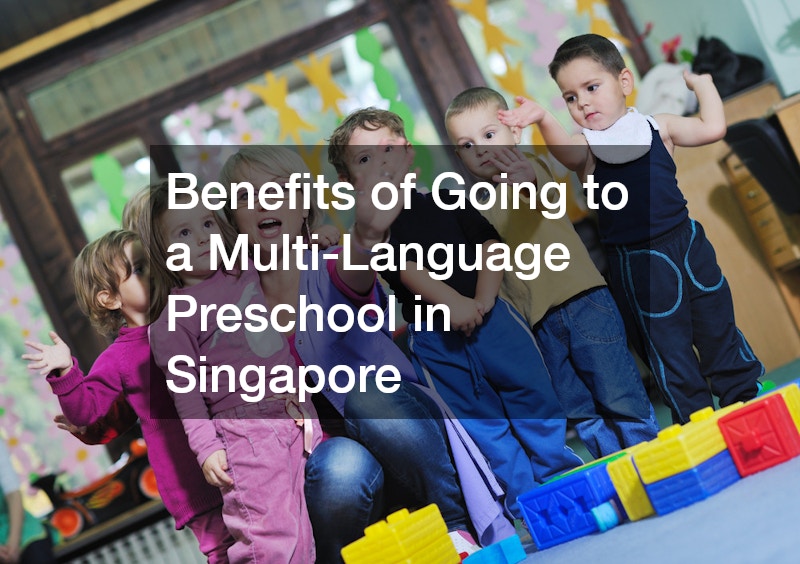Enrolling children in a multi-language preschool in Singapore presents numerous benefits that extend beyond basic education. Such early exposure sets the stage for a wealth of educational and developmental advantages that can shape a child’s future.
Why Choose a Multi-Language Preschool?
Educational Benefits
Learning multiple languages can profoundly enhance a child’s cognitive development. It fosters better memory retention and the ability to multitask effectively in various scenarios.
Children exposed to multiple languages often demonstrate increased attention to detail and excel in solving complex problems. This cognitive edge continues to serve them well throughout their academic journey.
Research has shown that language learning stimulates the brain’s neural networks, leading to greater overall cognitive prowess. In a multi-language preschool, these benefits begin at an age when children are most receptive.
Cultural Exposure
Multi-language preschools serve as a gateway to diverse cultures, offering children an enriched understanding of the world. This exposure fosters adaptability and an appreciation for varied perspectives.
Children gain insight into different cultural practices and traditions, which broadens their worldview early on. Learning about diverse backgrounds helps cultivate empathy and acceptance toward others.
Furthermore, exposure to multiple languages and cultures can spark curiosity and open-mindedness, qualities that are increasingly valuable in our global society. The multicultural environment of these schools supports inclusive learning experiences.
What Languages Are Offered in Singaporean Preschools?
Popular Language Options
Singapore’s multi-language preschools often offer widely spoken languages such as Mandarin, Malay, Tamil, and English. These options reflect the country’s rich multicultural fabric.
Parents have the flexibility to choose languages based on familial or future aspirations, ensuring relevance and personal connection. The availability of multiple languages enables tailored language education pathways.
In addition to these common languages, some preschools may offer niche languages like French or Japanese, further expanding linguistic reach. This caters to diverse parental preferences and aspirations for their children.
Curriculum and Language Integration
The curriculum in Singaporean preschools strategically integrates different languages into everyday activities. Language learning is woven into storytelling, songs, and interactive play, facilitating natural acquisition.
Educators use innovative methods to ensure that languages complement rather than compete with each other. This balanced approach prevents overload and maximizes language retention.
Integrating languages holistically reinforces learning in real-life contexts, making it applicable and engaging for children. It enables children to connect language use with their daily experiences.
How Does a Multi-Language Environment Affect Child Development?
Cognitive Development
Multi-language environments advance cognitive development significantly, offering benefits like enhanced critical thinking and problem-solving skills. These skills become foundational for academic success.
Learning multiple languages exercises the brain, encouraging agile and adaptive thinking. Children learn to approach problems from different angles, harnessing both analytical and creative techniques.
This cognitive flexibility is nurtured in a supportive preschool setting, where children are encouraged to explore languages without fear of making mistakes. Improved cognitive skills prepare them to handle future academic and life challenges effectively.
Social Skills
A multi-language setting cultivates robust social skills essential for interpersonal interactions. Children learn to communicate across cultural and linguistic barriers, fostering inclusive relationships.
Exposure to various languages enhances children’s ability to read social cues and express themselves more fluently and confidently. It builds a strong foundation for effective communication in diverse environments.
Interacting with peers from varied linguistic backgrounds encourages children to collaborate, empathize, and resolve conflicts amicably. These social competencies are invaluable throughout life, aiding personal and professional relationships.
What Are Parents’ Experiences and Expectations?
Parent Testimonials
Many parents have observed significant benefits from enrolling their children in multi-language preschools. They often report improved language skills and a greater appreciation for cultural diversity.
First-hand experiences reveal how children adapt quickly to learning multiple languages, surprising even seasoned educators. Parents note the increased curiosity and enthusiasm for learning new things in their children.
Parent feedback highlights the long-term value and satisfaction with their choice, often citing the support and expertise of the preschool’s teaching staff. These testimonials emphasize the positive impact on their children’s education and development.
Expectations vs. Reality
While some parents initially worry about the complexities of multi-language learning, their expectations are quickly surpassed. They find their children thrive in an immersive, multilingual environment.
Common concerns about language confusion are alleviated as children naturally navigate and distinguish among languages. Parents observe firsthand the adaptability and resilience of their children when faced with linguistic challenges.
Overall, parents often find the experience of a multi-language preschool more rewarding than anticipated. The alignment of their expectations with the enriching reality reinforces their commitment to this educational path.
Are There Any Challenges with Multi-Language Preschools?
Language Confusion and Overload
A potential challenge in multi-language preschools is balancing the learning of several languages simultaneously. Young learners can occasionally experience language confusion, which educators need to address carefully.
Educators employ specialized strategies to mitigate confusion, ensuring a supportive learning pace. Continuous monitoring and individual attention help balance language instruction with other developmental needs.
Despite occasional hurdles, the long-term benefits often outweigh the challenges. Structured guidance ensures that children benefit from a rich linguistic environment without feeling overwhelmed.
Accessibility and Resources
Ensuring access to resources and qualified teachers remains a challenge in delivering effective multi-language education. Schools strive to provide adequate learning materials and skilled language instructors.
Investment in language-specific resources is crucial for maintaining quality and depth of instruction. Schools must also navigate logistical challenges, such as scheduling and adaptable classroom environments.
Despite these challenges, many preschools successfully balance resources by innovating and prioritizing language learning. The ongoing development of programs ensures continued excellence and accessibility.
.



